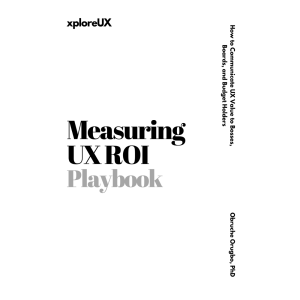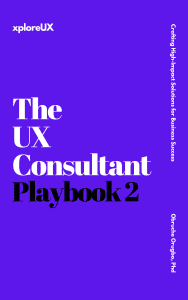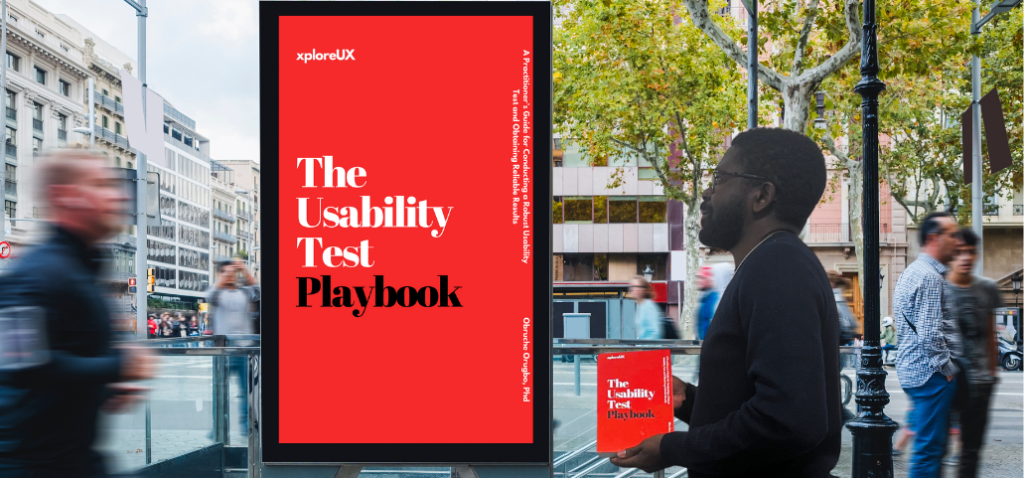
UX is no longer a “nice to have” or a discretionary expense: it is central to competitive differentiation, customer satisfaction, retention, and ultimately revenue and cost control. Yet many UX teams still struggle to win executive buy-in, secure budgets, or maintain long-term investment in design and research. That’s where a rigorous approach to UX ROI becomes indispensable.
The book Measuring UX ROI Playbook: How to Communicate UX Value to Bosses, Boards, and Budget Holders provides a practical and strategic guide for UX professionals who need to speak the language of business. It frames UX not just in terms of delight, usability, or aesthetics, but in its capacity to move organizational metrics and deliver measurable returns. Throughout this post I’ll refer back to lessons and frameworks from that playbook (cited 7+ times) while weaving in broader industry insights and examples.
Before we go into “how,” it’s worth pausing on the why: what are the tangible and intangible benefits of UX, and why should leadership care?
A strong UX investment yields benefits on multiple fronts:
- Increased conversions / revenue uplift
Better flows, clearer information architecture, fewer drop-offs, and lower friction translate directly into more completed transactions or higher adoption rates. In effect, you are smoothing the path from interest to action. Many case studies in UX literature show double- or triple-digit return multiples on UX investments. - Reduced costs & support burden
A more intuitive interface leads to fewer errors, fewer user mistakes, fewer help requests, and lower training costs. Over time, that can translate to large savings in support, maintenance, and customer service overhead. - Faster time to market / lower rework
Investing early in usability, testing, prototyping, and validation helps catch issues before they are coded. That saves developer time, reduces defects, and reduces expensive rework. UX becomes a risk mitigation play. - Better retention, loyalty & advocacy
Delightful and usable products tend to engender loyalty, which means lower churn, higher lifetime value (LTV), and positive word-of-mouth or referral. These longer-term effects compound. - Stronger brand, differentiation, and organizational culture
Over time, a reputation for great UX can become a brand differentiator. Internally, embedding a culture of user-centered thinking can uplift quality, cross-team empathy, and innovation. - Alignment of design with business goals
With UX metrics tied to business KPIs, UX stops being a silo and becomes part of the company’s strategic growth engine.
These are not just abstract claims; the Measuring UX ROI Playbook is built on the premise that UX must be communicable in business terms — that design teams must become fluent in ROI, metrics, and the “value conversation.” In other words, UX should not need to hide behind “we made it pretty” — it needs to show impact.
The Playbook sets out a structured, pragmatic way to design, measure, and communicate UX return on investment. Below I distill and expand on some of its central ideas.
- Clarify your audience and decision context
One of the early lessons in Measuring UX ROI Playbook is that you must begin by understanding who you are persuading — is it a product manager, the CFO, the board, or a business unit head? Each has different concerns (revenue growth, cost control, risk, long-term strategy). The way you frame UX ROI must resonate with that audience. The Playbook stresses that UX professionals should serve as translators between user needs and business priorities.
- Identify users’ top tasks & critical flows
The Playbook emphasizes early user research to identify the top tasks — those key, high-value actions users care most about. By focusing UX efforts on optimizing those tasks, you concentrate scarce resources where they will have greatest leverage. Improvements in top tasks are more likely to move the needle in business KPIs.
In practice, UX teams often conduct event, analytics, or contextual research to find which pages or flows see the biggest drop-offs or friction, then hone in on those.
- Define UX metrics and benchmark the current state
Once you have your priority areas, you need an initial baseline or benchmark. Measuring UX ROI Playbook advises defining metrics that capture both behavioral and attitudinal dimensions of experience. Examples include:
- Task completion rates, error rates, time-on-task
- Drop-off rates, abandonment points
- Conversion rates or funnel progression
- System Usability Scale (SUS), Net Promoter Score (NPS), Customer Satisfaction (CSAT)
- Support tickets per user, help request density
- Usage frequency, retention, engagement metrics
You measure the “before” experience so you can later compare to the “after.” Without a clear baseline, it’s nearly impossible to demonstrate change credibly.
- Map UX metrics to business KPIs
This is the critical bridge: you must connect UX improvements with the metrics that matter to the organization (revenue, cost, margin, retention, churn, acquisition, etc.). The Playbook provides guidance on mapping from specific UX metrics to business outcomes.
For example:
- A 10% improvement in task completion rate might map to a 5% increase in conversion or revenue
- A 20% reduction in error rate or support tickets might map to cost savings
- A boost in NPS or satisfaction could hint at higher retention or lower churn
Because correlation is not causation, it’s wise to document assumptions, show the logic model, and ideally track over time to see actual movement in the business metrics.
- Estimate financial gains (or cost savings) and investment
With the UX → KPI mapping in hand, you can estimate monetary gains or savings from UX improvements. For example:
- If the average transaction value is £100 and you predict 1,000 extra transactions per month from the UX improvement, that’s £100,000 monthly incremental revenue.
- If you reduce support calls by 500 per month and each call costs £10 in handling, that’s £5,000 saved monthly.
On the cost side, you must include all UX-related expenses: research, design, prototyping, testing, development implementation, and ongoing maintenance.
The Playbook insists on being realistic and conservative in estimations — overpromising is a fast route to losing trust.
- Compute ROI or cost-benefit ratio
A simple approach is:
ROI = (Gain from UX – Cost of UX) / Cost of UX
Or expressed as a multiple or percentage return. Many UX teams also use a “payback period” (how long before the UX investment recoups itself) or a benefit-to-cost ratio.
One caveat (noted in the Playbook) is that UX ROI is rarely a single snapshot: it’s often iterative and accumulative across releases. You may run a series of UX experiments, each with incremental gains.
- Run comparison studies, validate results, refine, and repeat
After implementing UX improvements, you collect the same metrics you used in the benchmark. Compare, validate statistically if possible, and feed real results back into further design. Measuring UX ROI Playbook encourages a cycle of measurement, learning, and iteration — not a one-and-done effort.
Moreover, the book emphasizes being transparent about what moved and what didn’t, and being adaptive in your assumptions. Over time, the UX team learns which metrics reliably respond to UX intervention — and which don’t — and refines the model.
- Present to stakeholders using meaningful narratives
Finally, the Playbook devotes attention to how to present UX ROI to non-UX audiences: use visuals, narrative, clear before/after comparisons, and guardrails around uncertainty. It recommends packaging results not as academic findings but as business stories: “Because we increased success rate in the checkout flow by 12%, we estimate a £200,000 annual revenue uplift with a break-even point in 3 months.”
It also encourages “showing the guardrails” — i.e. showing best-case, worst-case, and likely-case scenarios — and being upfront about assumptions and confidence levels.
Over time, as you accumulate multiple measured UX successes, you build credibility such that future UX proposals require less defense.
It helps to contextualize this approach with examples and industry benchmarks.
- Some organizations report that UX investments deliver returns of up to $100 for every $1 spent (i.e. 100× ROI) in certain contexts, though that is likely an ideal rather than typical result. Netguru
- At many enterprise organizations, UX teams use the “before and after” method: benchmark the current state, make a design intervention, and then measure the delta. Many UX measurement articles echo this general pattern. UXmatters+2userinterviews.com
- One article from UXMatters outlines a 10-step UX ROI measurement approach (clarify audience, KPIs, define UX metrics, map, benchmark, compute ROI, etc.), similar to the steps laid out in the Playbook. UXmatters
- A practical framework from User Interviews suggests first identifying the painful top problems, then benchmarking, then setting goals, then estimating benefits and costs. userinterviews.com
- Many UX metrics-tracking guides emphasize the mix of behavioral (time-on-task, completion rate) and attitudinal (SUS, NPS, CSAT) metrics. Veracity Consulting
These external framings align well with the Measuring UX ROI Playbook’s philosophy: there is no magic formula, but disciplined rigor, transparency, and iteration.
Let me sketch a hypothetical example, echoing how one might apply the Playbook in practice.
Scenario
You lead UX for a SaaS product. The marketing team has noticed a high drop-off in the trial signup funnel: many visitors start but do not complete the signup form. You propose a UX redesign of the signup flow, better guidance, fewer fields, progressive disclosure, and micro-feedback.
Step 1: Clarify the audience
Your audience is the VP of Product and the CFO. They care about increasing trial-to-paid conversion, reducing acquisition cost, and short-term payback.
Step 2: Identify top tasks & friction
You analyze analytics and find that over 40% of users abandon at the third page of the signup wizard. You also run a few usability tests, and observe confusion around certain fields and error messaging.
Step 3: Define metrics & benchmark
Your baseline metrics:
- Page 1 → 2 completion: 85%
- Page 2 → 3 completion: 70%
- Page 3 → submit completion (full signup): 55%
- Time to complete signup: average 3 minutes
- Support tickets related to signup: 200/month
Also capture user satisfaction (CSAT) post-signup on a small scale.
Step 4: Map to business KPIs
You estimate: Each additional completed trial signup has a 20% chance of converting to paid, with an average first-year revenue of £500. Reducing friction by 10 percentage points in completion might translate to an incremental 1,000 more trials per month, or 200 more paid conversions → £100,000 incremental revenue annually. Also, dropping support tickets by 50/month saves £500 in support cost (assuming £10 per ticket).
Step 5: Estimate cost
Your UX redesign, testing, development, and QA time will cost about £30,000 (including designer, researcher, dev, testing, and rollout). Also budget some user research.
Step 6: Compute ROI
Projected gain = £100,000 + £6,000 (annual support saving) = £106,000
Cost = £30,000
ROI = (106,000 − 30,000) / 30,000 = 2.53 → or 253%
Payback period = ~3.4 months
You might also show a conservative scenario (only 5 percentage points gain) and a best-case scenario, to reflect uncertainty.
Step 7: Implement, measure, validate
After redesign is live, you collect post-metrics:
- Page 1 → 2: 90%
- Page 2 → 3: 78%
- Page 3 → submit: 63%
- Support tickets related to signup drop to 120/month
- New trials/month increased by 800
You recalculate actual incremental revenue and support savings, compare with your forecast, and adjust for next round.
Step 8: Present to stakeholders
You build a visually compelling slides deck: before/after funnels, revenue projection, cost breakdown, ROI multiple, payback timeline. You include caveats, sensitivity analysis, and a narrative storyline: “Because we fixed friction and clarified error feedback, we unlocked an additional £100,000 in revenue with a 3-month break-even. The UX investment pays for itself quickly and yields ongoing benefit.”
By following this kind of structured approach, you follow the core logic of Measuring UX ROI Playbook.
Although the promise of UX ROI is compelling, many teams face pitfalls when trying to implement it. The Playbookanticipates many of these and offers guardrails:
- Lack of a credible baseline
If you don’t take the time to benchmark before redesign, your “improvements” will be questioned. The Playbook strongly insists on the foundation of a benchmark. - Attributing causation too confidently
Business metrics can be noisy and influenced by external factors (marketing campaigns, seasonality). The Playbook advises clarity about assumptions, confounding variables, and ideally A/B or controlled experiments when possible. - Overestimating benefits or ignoring costs
Inflated projections or forgetting to include full UX implementation cost undermines credibility. The Playbook recommends conservative estimates and fully accounting for hidden costs (QA, iterations, maintenance). - Choosing metrics that don’t tie to business value
Tracking UX vanity metrics (e.g. “clicks per screen” in isolation) is dangerous unless they map to outcomes. The Playbook emphasizes alignment of UX metrics with business KPIs. - Stakeholder skepticism / lack of executive champion
If leadership doesn’t care or doesn’t trust UX, your ROI case may get ignored. The Playbook encourages cultivating an executive sponsor, gradually building trust through repeated wins, and speaking the stakeholder’s language. - One-off measurement rather than iteration
Some teams treat UX ROI as a one-time presentation. The Playbook treats it as a repeating cycle: measure, refine, iterate, accumulate credibility. - Tunnel vision on quantitative metrics, ignoring qualitative insights
The Playbook acknowledges that numbers tell only part of the story; user quotes, session recordings, and qualitative feedback help shape interpretations and build empathy.
By being aware of these risks and following the disciplined approach laid out in Measuring UX ROI Playbook, UX teams can avoid common traps and build a sustainable ROI mindset.
Here are actionable tips, distilled from the Playbook and broader UX ROI practice, to help you embed this approach:
- Start small, build credibility: Choose a manageable project with measurable impact (e.g. a signup flow, onboarding, checkout) to pilot your ROI approach.
- Get leadership buy-in early: Share your measurement plan, assumptions, and narrative before building — allow stakeholders to critique and align expectations.
- Use a “sensitivity analysis” approach: Present best-case, likely-case, and conservative scenarios, showing how small changes in assumptions affect ROI.
- Document assumptions explicitly: Don’t hide your estimates — be transparent about how you derived numbers.
- Use real customers and realistic settings: Usability tests and measurement should as closely as possible mirror real usage. (Lab vs field tradeoffs).
- Combine quantitative + qualitative evidence: Use quotes, session stories, and user feedback to humanize the numbers.
- Iterate and refine your model: As you get more measurement cycles, learn which metrics reliably respond to UX interventions, and refine your ROI mapping.
- Create a UX ROI “playbook” repository: Maintain a living document that collects past ROI efforts, lessons learned, and key metrics over time — much like the Playbook itself is doing.
- Normalize UX ROI conversations across teams: Encourage product, analytics, marketing, and finance teams to adopt similar measurement disciplines so that UX is not seen in isolation.
- Be honest about risk and uncertainty: Showing that you are aware of limitations—and offering guardrails or confidence intervals—boosts credibility, not weakens it.
UX and ROI don’t have to be opposites. When done well, UX becomes a measurable, strategic investment — not a soft cost line item. The Measuring UX ROI Playbook: How to Communicate UX Value to Bosses, Boards, and Budget Holdersis, in my view, a vital resource for UX professionals seeking to do exactly that: turn design, research, and user empathy into credible business leverage.
If you embed the principles from that playbook — rigorous benchmarking, metric-to-KPI mapping, clear narrative, transparency, iterative measurement, and alignment with stakeholder priorities — you transform the conversation about UX from “who cares how pretty it is” to “how much value can it unlock.”







